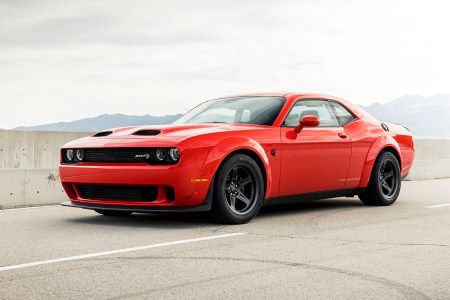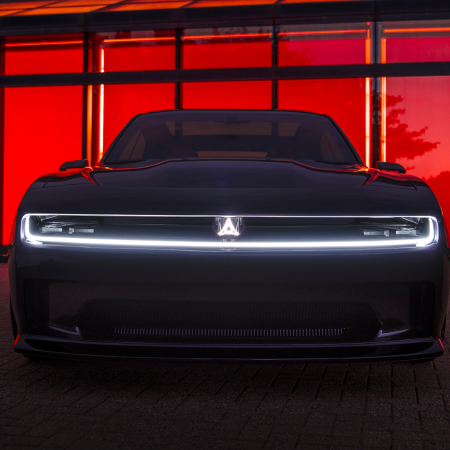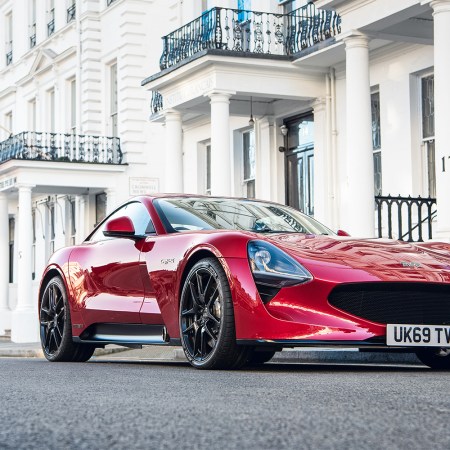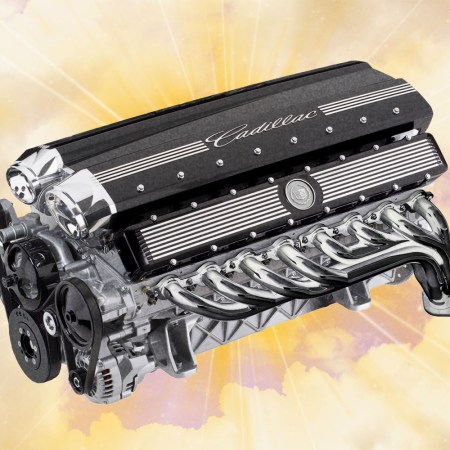The scene at Las Vegas Motor Speedway on Monday night was something out of a Fast & Furious movie. As the sunset bathed the desert in a fiery light, a helicopter flew across the sand carrying a muscle car that rocked back and forth on a line. After dropping the vehicle on the drag strip, the V8-powered hellion roared to life, then shot down the tarmac alongside great balls of fire.
This was the debut of the Dodge Challenger SRT Demon 170, a special-edition, limited-production model that the automaker is calling the seventh and final of its “Last Call” muscle cars. As such, it marks the end of a certain muscle car era. Alongside its announcement of the Demon 170, Dodge reminded buyers that its Challenger and Charger “are coming to an end in their current HEMI-engine-powered forms at the end of 2023.”
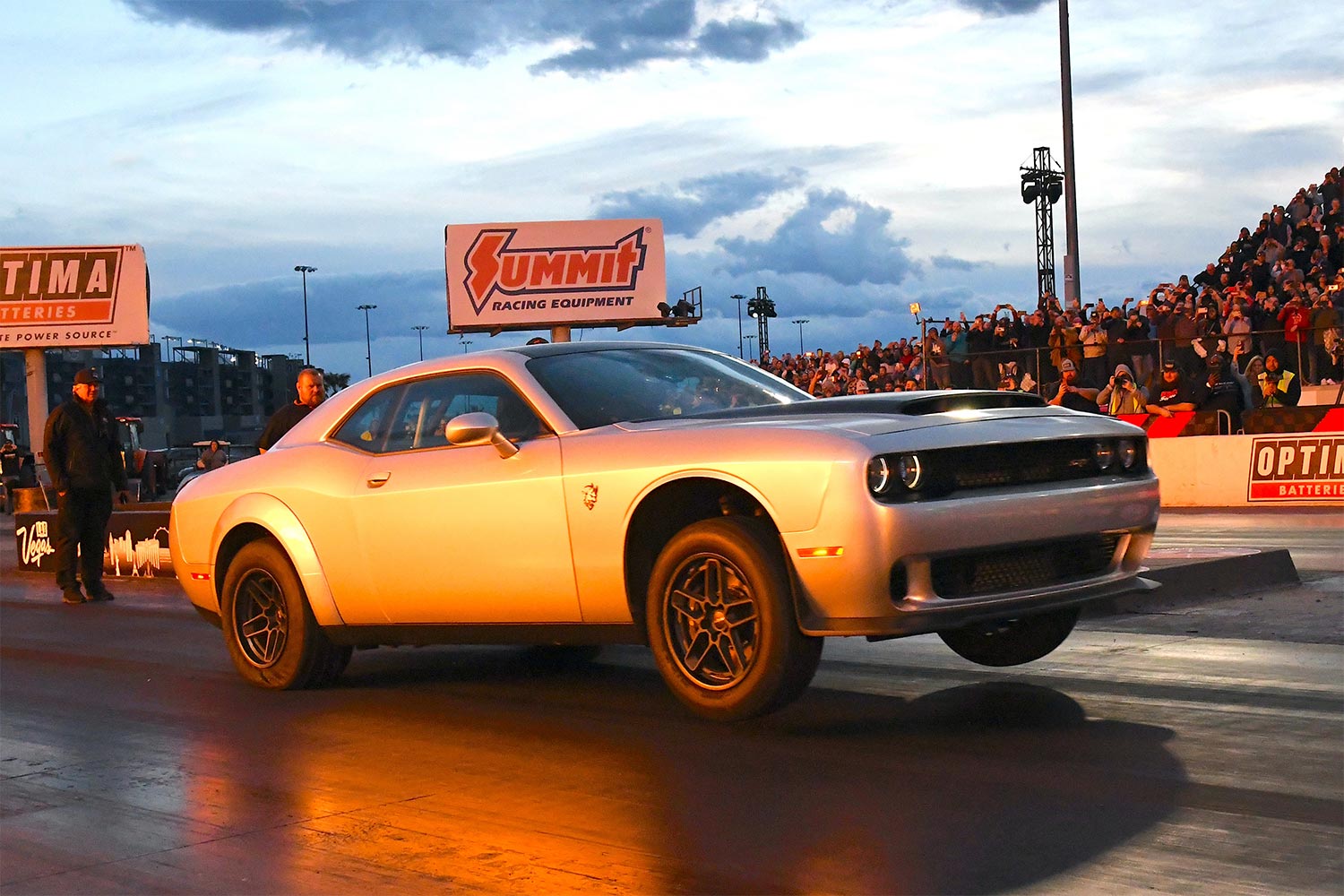
To send off the Challenger, the Demon 170 is not only “the quickest, fastest and most powerful muscle car in the world,” according to Dodge — with an absurd 1,025 maximum horsepower, 0 to 60 mph time of 1.66 seconds and National Hot Rod Assocation-certified quarter-mile of 8.91 seconds — it is also the ultimate showcase of the muscle car culture that will be difficult for Dodge to leave behind.
Here are just a few of the ways Dodge is promoting the Demon 170: The car is so fast it received “an NHRA violation letter for running a sub-nine-second quarter-mile without a safety cage or parachute.” You’ll find “Alcohol Injected” laser etched into the front of the hood scoop because the car is designed for maximum performance with E85 ethanol blend fuel. And the fuel rail and injectors are so powerful the car can suck down 164 gallons of fuel per hour, “more than the average U.S. shower head.” This is a selling point.
Can an Electric Vehicle Ever Be a Real Muscle Car?
Dodge said it will build the “world’s first.” We asked automotive experts if it’s even possible.Will Dodge be able to immediately transition away from this gas-guzzling, Hemi-howling image of muscle cars? They’re aiming to launch an electrified take on the drag racer in the next year or so, but as we’ve discussed, going fully electric is asking a lot of their fanbase. But while some are insinuating that this final “Last Call” Challenger marks the swan song for the gas-powered era, Dodge is leaving itself some wiggle room. An end to the “current HEMI-engine-powered forms” of the Challenger and Charger definitely signals a shift to electrification, but it also offers the possibility for other traditional internal combustion muscle cars to take shape.
If you’re not willing to bet on that possibility, the 2023 Dodge Challenger SRT Demon 170, which is limited to a max production of 3,000 models for the U.S. market, will be available for ordering beginning March 27, but dealer locations are already available for perusal at DodgeGarage.com for those who want to grease some palms. For 1,025 horsepower, though, you’re looking at a much more modest price than similarly powered supercars: the MSRP here comes in under six figures at $96,666. Expect the final bill to be significantly higher, though.
Thanks for reading InsideHook. Sign up for our daily newsletter and be in the know.

